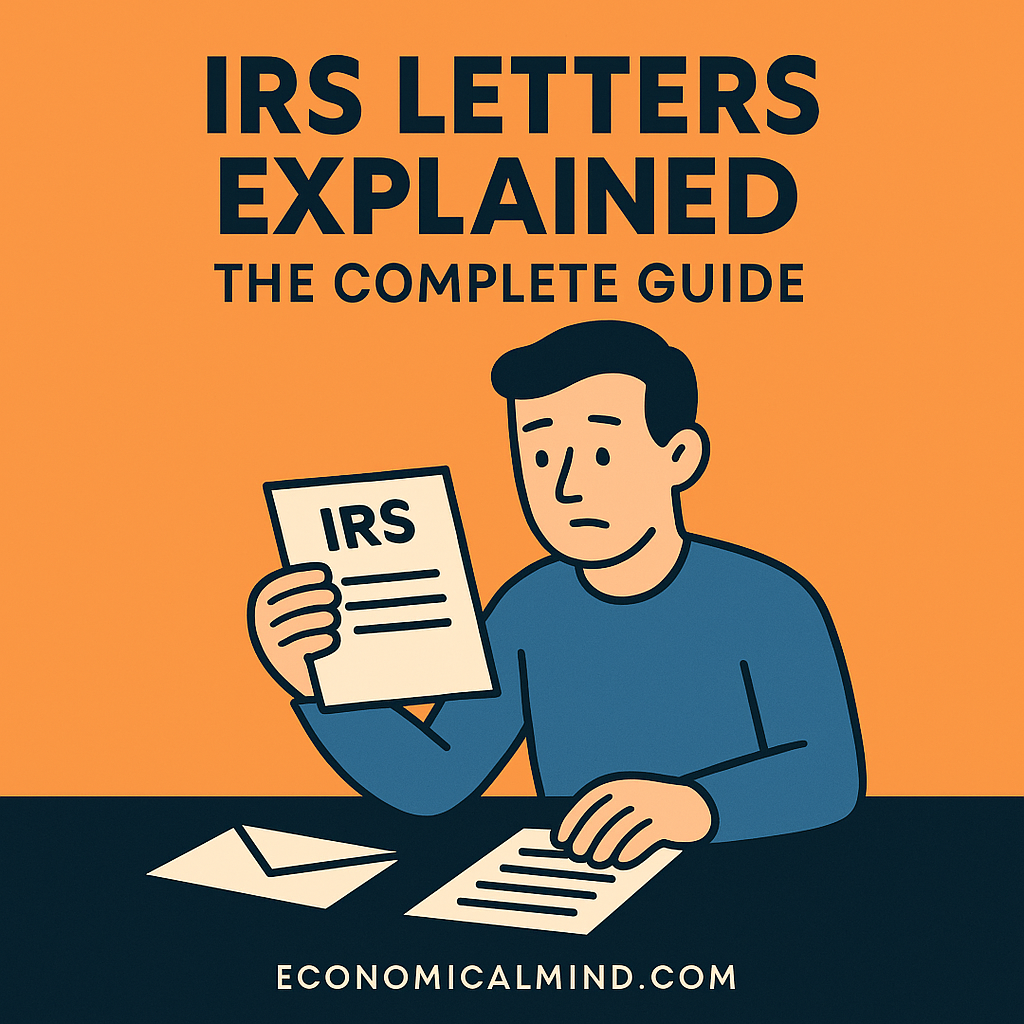
Few things cause more anxiety than seeing an envelope from the IRS in your mailbox. But most IRS letters aren’t as scary as they seem — they’re simply notifications or requests for clarification. Understanding what these letters mean (and how to respond) can help you stay calm and handle them correctly.
What Are IRS Letters?
IRS letters are official notices sent to taxpayers about their tax accounts. They can cover a wide range of topics — from confirming receipt of your return to requesting payment or additional documentation.
Each letter includes a notice number in the upper right corner (like CP2000 or LT11), which identifies the reason it was sent. The key is knowing what type you received and what action — if any — you need to take.
Common Types of IRS Letters and What They Mean
- CP11 – Changes to Your Tax Return
The IRS corrected an error and you now owe additional tax.
Action: Review their changes, verify accuracy, and pay if correct or dispute if not. - CP12 – Refund Adjustment
The IRS changed your refund amount due to a math or clerical error.
Action: Compare with your filed return and respond only if you disagree. - CP14 – Balance Due Notice
The IRS says you owe taxes, penalties, or interest.
Action: Pay the amount or set up a payment plan to avoid further penalties. - CP49 – Refund Applied to Other Debts
Your refund was used to pay other federal or state debts.
Action: Check the explanation and verify that the offset was legitimate. - CP2000 – Unreported Income or Mismatch
The IRS found a difference between your reported income and what employers or banks reported.
Action: Review the discrepancies and respond within 30 days with supporting documents. - LT11 – Final Notice of Intent to Levy
The IRS intends to seize assets if payment isn’t made.
Action: Act immediately. Contact the IRS or a tax professional to set up a resolution. - Letter 6475 – Economic Impact Payment Summary
Summarizes stimulus payments you received to help reconcile your tax credit.
Action: Use it when filing your return to ensure accuracy. - Letter 6419 – Child Tax Credit Advance Summary
Reports advance payments for the Child Tax Credit.
Action: Include this info when filing to avoid processing delays.
Pros of Understanding IRS Letters
1. Avoid Penalties
Quickly addressing IRS notices can stop interest or penalties from growing.
Example: Responding to a CP14 within 21 days prevents extra fees.
2. Protect Your Refund
Knowing what documents the IRS needs can help you avoid refund delays.
3. Correct Mistakes Early
Sometimes the IRS makes errors — timely responses protect you from paying more than necessary.
4. Peace of Mind
Understanding that most letters are informational reduces unnecessary stress.
5. Faster Problem Resolution
Clear communication often prevents cases from escalating into audits or collections.
Cons of Ignoring IRS Letters
1. Accrued Penalties and Interest
Unpaid balances grow quickly.
Fix: Contact the IRS to set up a payment plan immediately.
2. Potential Levies or Liens
Failure to act can lead to wage garnishment or asset seizure.
Fix: Always respond to final notices like LT11 right away.
3. Missed Refunds or Credits
If you don’t verify details or respond, you could lose money you’re owed.
Fix: Check deadlines carefully.
4. Unnecessary Stress
Ignoring IRS mail only makes things worse.
Fix: Open every letter, note deadlines, and keep copies for your records.
Best Practices for Handling IRS Letters
1. Don’t Panic — Read Carefully
Each letter clearly states the issue and any required action.
2. Verify the Notice Number
Identify what kind of notice it is and look it up on the IRS website.
3. Check for Errors
Compare the letter’s information with your tax return or W-2s.
4. Respond Promptly
Deadlines are typically 30 days from the date on the letter. Late responses can trigger further action.
5. Keep Copies of Everything
Save both the letter and any responses you send.
6. Contact the IRS if Needed
Use the phone number on the notice or log into your IRS account for clarification.
7. Use Certified Mail for Responses
If you mail documents, use certified mail to track delivery.
8. Don’t Ignore Final Notices
“Final” means the IRS is about to act — always respond quickly.
9. Consider Professional Help
If the issue involves audits, large balances, or complex tax issues, contact a CPA or enrolled agent.
10. Watch Out for Scams
The IRS never demands payment via gift cards or phone calls. Always verify authenticity.
Key Takeaway
Most IRS letters are solvable — or even harmless — once you understand what they mean. The key is to stay calm, read carefully, and take action before deadlines pass. Knowledge turns that envelope from a source of panic into a problem you can handle with confidence.
